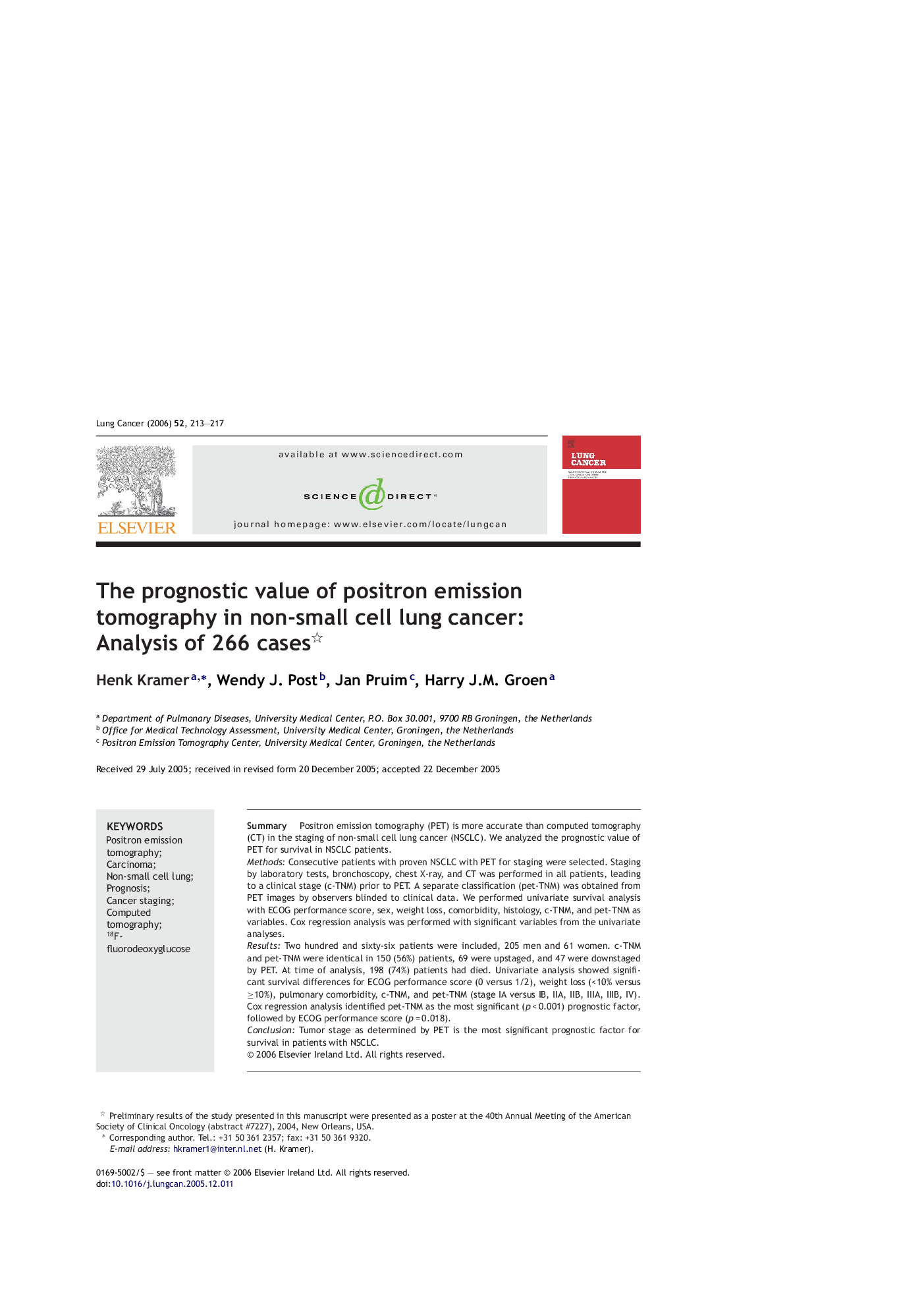| Article ID | Journal | Published Year | Pages | File Type |
|---|---|---|---|---|
| 2144608 | Lung Cancer | 2006 | 5 Pages |
SummaryPositron emission tomography (PET) is more accurate than computed tomography (CT) in the staging of non-small cell lung cancer (NSCLC). We analyzed the prognostic value of PET for survival in NSCLC patients.MethodsConsecutive patients with proven NSCLC with PET for staging were selected. Staging by laboratory tests, bronchoscopy, chest X-ray, and CT was performed in all patients, leading to a clinical stage (c-TNM) prior to PET. A separate classification (pet-TNM) was obtained from PET images by observers blinded to clinical data. We performed univariate survival analysis with ECOG performance score, sex, weight loss, comorbidity, histology, c-TNM, and pet-TNM as variables. Cox regression analysis was performed with significant variables from the univariate analyses.ResultsTwo hundred and sixty-six patients were included, 205 men and 61 women. c-TNM and pet-TNM were identical in 150 (56%) patients, 69 were upstaged, and 47 were downstaged by PET. At time of analysis, 198 (74%) patients had died. Univariate analysis showed significant survival differences for ECOG performance score (0 versus 1/2), weight loss (<10% versus ≥10%), pulmonary comorbidity, c-TNM, and pet-TNM (stage IA versus IB, IIA, IIB, IIIA, IIIB, IV). Cox regression analysis identified pet-TNM as the most significant (p < 0.001) prognostic factor, followed by ECOG performance score (p = 0.018).ConclusionTumor stage as determined by PET is the most significant prognostic factor for survival in patients with NSCLC.
